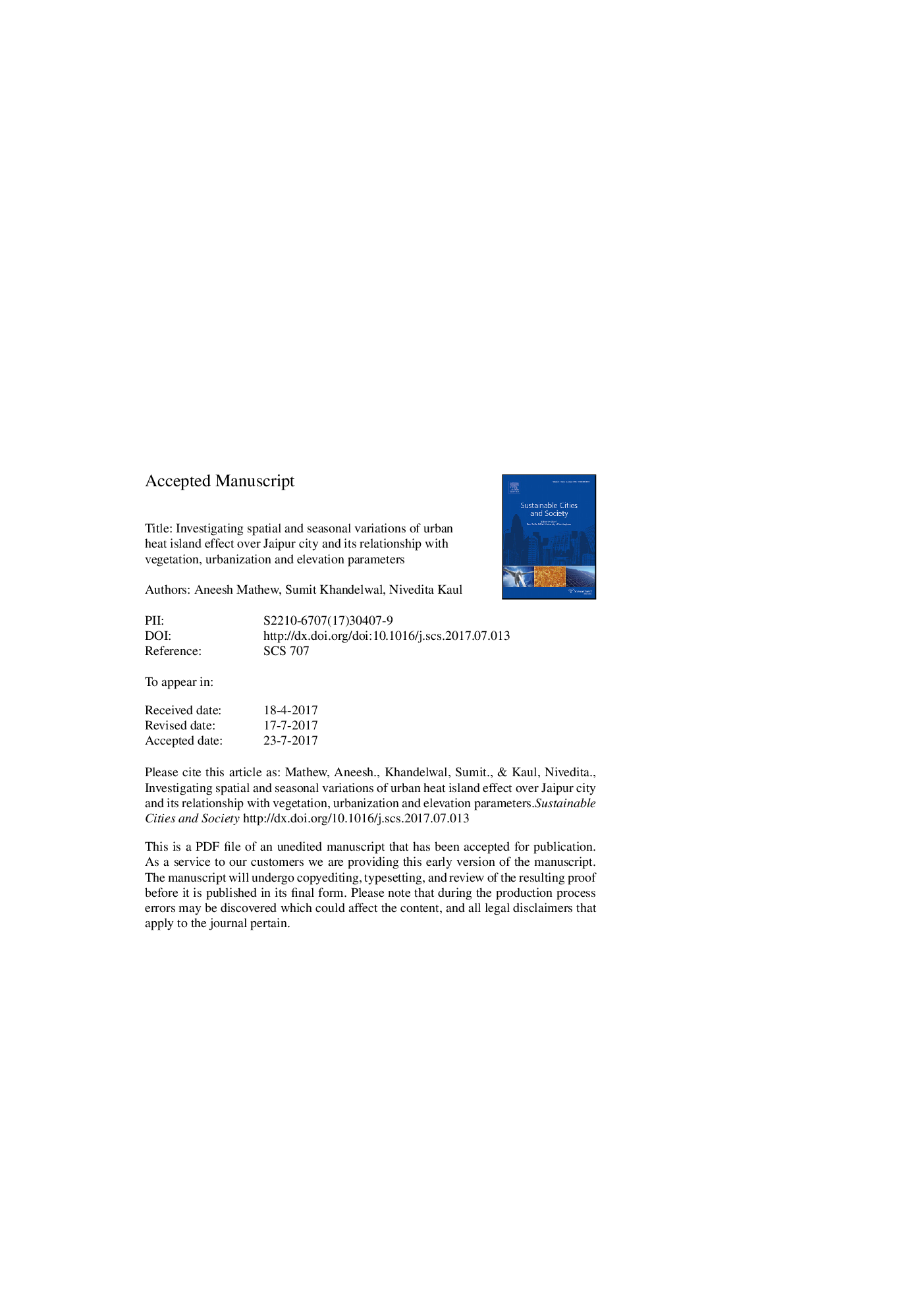| Article ID | Journal | Published Year | Pages | File Type |
|---|---|---|---|---|
| 4928086 | Sustainable Cities and Society | 2017 | 49 Pages |
Abstract
Land Surface Temperature (LST) is one of the principal parameters for the analysis of surface urban heat island (SUHI) effect. Analysis of 8-day night-time LST data shows that significant SUHI exists over the Jaipur study area. Average maximum UHI intensity from 2003 to 2015 varies from 5.12Â K to 10.37Â K, and overall average maximum UHI intensity is 7.86Â K. A negative correlation exists between LST and vegetation indices. The relationship between LST and percent impervious surface area (%ISA) is almost same throughout the entire season with a consistent rising trend. A positive correlation has been found between LST and normalized difference built-up index (NDBI), especially for monsoon season. The trend of LST and NDBI relationship during the different season is different, which clearly indicates that the relationship between LST and NDBI is season dependent. NDBI cannot be used as a good indicator for SUHI studies where bare land is predominant especially for the summer season. Hence %ISA can be used as a better parameter for SUHI studies than NDBI. As the elevation increases, rising trend of LST can be observed in the study area. LST-Elevation scatterplots show a negative relationship in high altitude areas, especially during monsoon season.
Related Topics
Physical Sciences and Engineering
Energy
Renewable Energy, Sustainability and the Environment
Authors
Aneesh Mathew, Sumit Khandelwal, Nivedita Kaul,
